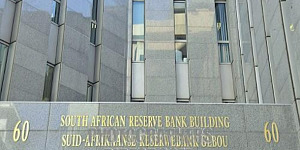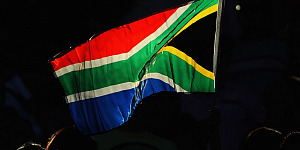Fitch Ratings has revised the Outlooks on South Africa's Outlook to Negative from Stable, while affirming the Long-Term Foreign and Local Currency Issuer Default Ratings (IDRs) at 'BBB-'.
The issue ratings on South Africa's senior unsecured long-term foreign- and local-currency bonds have also been affirmed at 'BBB-'. The Country Ceiling has been affirmed at 'BBB'. The Short-Term Foreign and Local Currency IDRs and the issue ratings on senior unsecured short-term local currency securities have been affirmed at 'F3'. The rating on the RSA Sukuk No. 1 Trust has also been affirmed at 'BBB-', in line with South Africa's Long-Term Foreign Currency IDR.
KEY RATING DRIVERS
The revision of the Outlooks on South Africa's Long-Term IDRs to Negative reflects the following key rating drivers:
Political risks to standards of governance and policy-making have increased and will remain high at least until the electoral conference of the African National Congress (ANC) in December 2017, negatively affecting macroeconomic performance. The conference will elect a new ANC leader, who will be the ANC's presidential candidate in national elections in 2019.
The in-fighting within the ANC and the government is likely to continue over the next year. In Fitch's view, this will distract policymakers and lead to mixed messages that will continue to undermine the investment climate, thereby constraining GDP growth. A report by the public protector made allegations of influence peddling and improper procurement practices involving close allies of the president, although it will be subject to a judicial review and a commission of enquiry. The report underlines the risks to state-owned enterprise (SOE) governance and has led to the resignation of the CEO of the state-owned electricity company Eskom.
The South African economy may have started recovering from a series of shocks, but business confidence remains depressed and investment has continued to contract. We expect only modest GDP growth of 1.3% in 2017 and 2.1% in 2018, although this is an improvement from 0.5% in 2016. The economy had been hit in 2015 and 2016 by electricity shortages, the worst drought in decades, a sharp fall in international prices for some of South Africa's main mining commodities and rising policy uncertainty.
As a result of low GDP growth and weaker-than-expected tax revenues, the government in its Medium-Term Budget Policy Statement (MTBPS) raised the budget deficit forecast for the fiscal year ending March 2017 (FY16/17) to 3.4% of GDP from 3.2% in the February budget, with a gradual narrowing to 3.1% in FY17/18, 2.7% in FY18/19 and 2.5% in FY19/20. The deterioration would have been worse without the government's decision, announced in the MTBPS, to raise additional revenue of ZAR13bn and lower the expenditure ceiling in FY17/18. Together with measures included in the February budget, fiscal tightening in FY17/18 relative to previous plans will amount to 1% of GDP. The government has not announced which taxes are to be raised, but the fiscal targets now look only mildly optimistic. Fitch expects the deficit to shrink to 2.8% in FY18/19 from 3.2% in FY17/18.
Total general government debt (including local government debt not covered by the MTBPS debt numbers) will rise to 55% at end-March 2019 from 51.5% at end-March 2016. The debt structure remains highly favourable, with 90.7% of debt denominated in local currency and an average maturity of government debt securities of 14.6 years at end-September 2016.
Additional spending on student bursaries as a result of student protests was absorbed by using the contingency reserve, some one-off financing and a re-prioritisation of other expenditures, but the protests showed that social pressures could lead to further spending needs. Growth of the working age population of around 2% and high and rising unemployment, at 27.1% in the third quarter, also contribute to spending pressures. However, the fact that expenditure ceilings introduced in 2012 have never been breached suggests such pressures have so far been well managed.
Debt of SOEs remains an important contingent liability to the sovereign. Debt of the nine major SOEs amounted to ZAR743bn (18.2% of GDP) at end-March 2016, of which ZAR280bn was subject to government guarantees. In addition, the government provides guarantees on electricity prices to independent power producers complementing Eskom's electricity generation.
ANC factional battles may undermine government efforts to improve the governance of SOEs, which could affect the plan to stream-line the SOE portfolio. The plan to build nuclear power stations has run into substantial opposition because of concerns about governance. As a result, the government announced in November that the first plant will not be commissioned until 2037, alleviating concerns over any medium-term fiscal impact.
The 'BBB-' Long-Term IDRs also reflect the following drivers:
The net international investment position turned positive in 2015, at 13% of GDP, for the first time since at least 1990, although this was largely due to the depreciation of the rand. The current account deficit also remained on a narrowing trend in 1H16, partly reflecting import compression as well as a lagged effect of earlier depreciation on competitiveness so that the current account deficit is likely to shrink to 3.9% of GDP, from 4.3% in 2015. However, imports will strengthen again as the economy recovers gradually and gains in competitiveness could be eroded by continued high wage growth, leading to a renewed widening in the current-account deficit in 2017 and 2018.
Despite weak macroeconomic conditions, the banking sector remains a rating strength. The total capital adequacy ratio of the system increased to 15.5% in September from 14.2% at end- 2015. However, total domestic credit growth slowed to 7.5% in August, the lowest since 2014 and only moderately above inflation. Non-performing loans stood at 3.2% of total assets, barely above the trough of the current cycle of 3.1%, although a gradual rise is expected, reflecting the rising average age of assets and the impact of continued economic weakness on asset quality. Inflation has risen back above the upper limit of the inflation target range of 3%-6% of the South African Reserve Bank (SARB) but is likely to ease, to an average of 5.6% in 2018, so that SARB is unlikely to further raise its interest rates beyond the current level of 7%.
Indicators of economic development are weaker than 'BBB' category medians. GDP per capita at market prices is estimated at USD5,140 for 2016, compared with a median of USD9,188. The World Bank's governance indicator is broadly in line with the median but this might not fully reflect the recent political tensions.
SOVEREIGN RATING MODEL (SRM) and QUALITATIVE OVERLAY (QO)
Fitch's proprietary SRM assigns South Africa a score equivalent to a rating of 'BBB-' on the Long-Term Foreign Currency IDR scale.
In accordance with its rating criteria, Fitch's sovereign rating committee decided not to adopt the score indicated by the SRM as the starting point for its analysis because the SRM output has migrated to 'BBB-' from 'BBB', but in our view this is potentially a temporary deterioration that may not be sustained.
Consequently, Fitch's sovereign rating committee kept the starting point for the qualitative overlay adjustment at 'BBB' and adjusted the output from the SRM to arrive at the final Long-Term Foreign Currency IDR by applying its QO, relative to rated peers, as follows:
- Macroeconomic Performance, Policies and Prospect: -1 notch, to reflect South Africa's weak growth prospects relative to the 'BBB' category median, with important repercussions for public finances.
Fitch's SRM is the agency's proprietary multiple regression rating model that employs 18 variables based on three-year centred averages, including one year of forecasts, to produce a score equivalent to a Long-Term Foreign Currency IDR. Fitch's QO is a forward-looking qualitative framework designed to allow for adjustment to the SRM output to assign the final rating, reflecting factors within our criteria that are not fully quantifiable or not fully reflected in the SRM.
RATING SENSITIVITIES
The following risk factors could, individually or collectively, result in a downgrade:
- Continued political instability that adversely affects standards of governance, the economy or public finances.
- A failure to stabilise the government debt/GDP ratio or an increase in contingent liabilities.
- Failure of GDP growth to recover sustainably, for example, due to sustained uncertainty about economic policy.
- Rising net external debt to levels that raise the potential for serious financing strains.
The Outlook is Negative. Consequently, Fitch does not currently anticipate developments with a high likelihood of leading to an upgrade. However, future developments that may, individually or collectively, lead to a positive rating action include:
- A track record of improved growth performance.
- A marked narrowing in the budget deficit and a reduction in the government debt/GDP ratio.
- A narrowing in the current account deficit and improvement in the country's net external debt/GDP ratio.
KEY ASSUMPTIONS
Fitch expects global economic trends and commodity prices to develop as outlined in Fitch's September Global Economic Outlook.






































